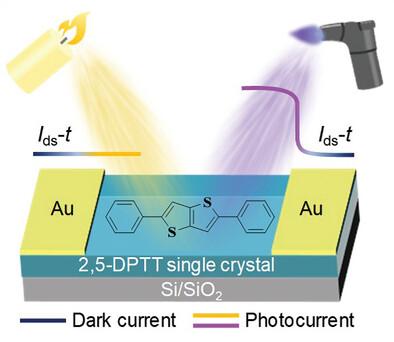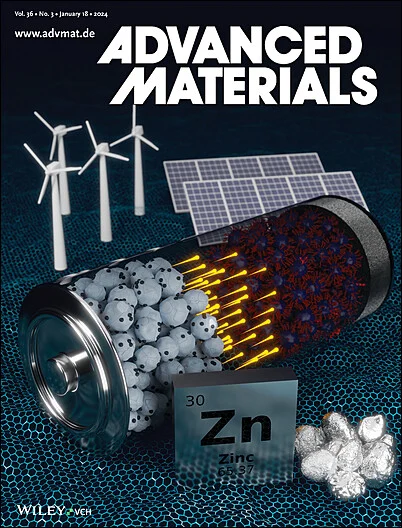Tuning Absorption State and Intermolecular Potential of Organic Semiconductors for Narrowband Ultraviolet Photodetection
IF 27.4
1区 材料科学
Q1 CHEMISTRY, MULTIDISCIPLINARY
引用次数: 0
Abstract
Narrowband response of organic semiconductors determines the band selectivity and anti-interference of the organic photodetectors, which are pursued for a long time but have not yet been resolved in the UV band. Herein, a feasible strategy is developed to realize narrowband UV response by tuning the absorption state and intermolecular potential of organic semiconductors. The as-designed non-Donor-Acceptor molecule, 2,5-diphenylthieno[3,2-b]thiophene (2,5-DPTT), exhibits narrowband absorption by fully suppressing the charge transfer state absorption. Simultaneously, the intermolecular potential is significantly enhanced (to ≈90 KJ mol−1) by modulating the molecular planarity. Consequently, the UV photodetector based on 2,5-DPTT achieves excellent narrowband response at 310 nm wavelength and a record-breaking photosensitivity (P = 1.21 × 106) in the deep UV range. In the demonstration application of flame alarm, the flame detector based on 2,5-DPTT single crystal exhibits excellent anti-interference capability. This work provides the inspiration for designing narrowband responsive organic semiconductors and building up multifunctional optoelectronic devices.

求助全文
约1分钟内获得全文
求助全文
来源期刊

Advanced Materials
工程技术-材料科学:综合
CiteScore
43.00
自引率
4.10%
发文量
2182
审稿时长
2 months
期刊介绍:
Advanced Materials, one of the world's most prestigious journals and the foundation of the Advanced portfolio, is the home of choice for best-in-class materials science for more than 30 years. Following this fast-growing and interdisciplinary field, we are considering and publishing the most important discoveries on any and all materials from materials scientists, chemists, physicists, engineers as well as health and life scientists and bringing you the latest results and trends in modern materials-related research every week.
 求助内容:
求助内容: 应助结果提醒方式:
应助结果提醒方式:


